Bentley Bentayga engines, drive and performance
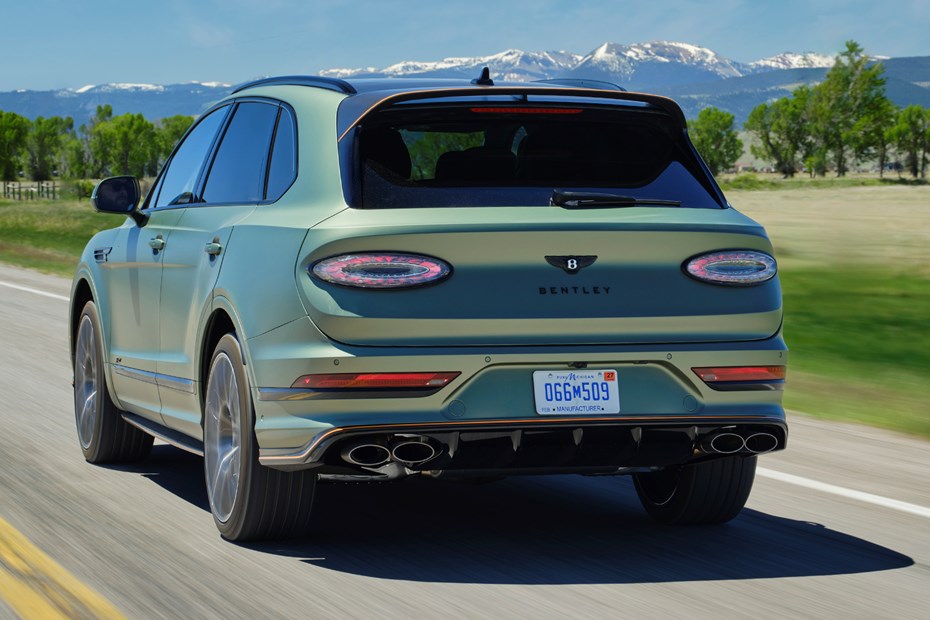
- Fantastic V8 twin-turbo motor
- Plug-in hybrid the sensible choice
- Eight-speed automatic transmission
Petrol engine
The bonkers 6.0-litre,12-cylinder, twin-turbocharged Bentayga Speed W12 is no longer available. So the engine lineup kicks off with the V8. It’s hardly a poor substitute for the W12, as it’s still wickedly quick and muscular.
In the base Bentayga, its 4.0-litre V8 makes 550hp and it’ll crack the 0-62mph sprint in 4.5 seconds. To drive, it feels effortless in all situations, and when you need the power to overtake it simply flies, with almost instant seamless reactions. The well-judged throttle response allows the driver to gently coax the Bentayga around city centres easily too.
The acceleration really is impressive considering the size of car we’re dealing with here. It tips the scales at upwards of 2.4 tonnes, which is around twice the weight of a Ford Fiesta but it’s also much, much quicker, yet incredibly laid-back about it, too. To conserve fuel, it features a cylinder shut-down function that effectively switches off half of the engine when it’s not needed, but you won’t notice this working.
Or, you could opt for the Speed V8. Running the same twin-turbo V8 as the core Bentayga, but with additional boost pressure, it produces 650hp and can sprint to 62mph in just 3.6 seconds.
Plug-in hybrid
Being a plug-in hybrid, power is developed by a 3.0-litre V6 petrol engine paired with an electric motor that’s fed by a sizeable battery pack. Total output for the standard version 449hp and it’ll cover the 0-62mph dash (with a fully-charged battery) in 5.2 seconds.
In September 2022, Bentley added a Bentayga Hybrid S model, with power output increased to 462hp. At the same time, a bigger battery pack was added to all hybrid models, and electric-only power and torque also increased to 136hp and 440Nm (6% and 15% more, respectively).
The obvious benefit of this version is the ability to recharge its lithium-ion battery pack and drive for miles using electricity alone – up to 27 miles WLTP in the latest version. We’ve detailed its fuel economy in the Running Costs section, so let’s talk about the performance.
In electric mode it’s fine around town and when you’re mooching along a flat road, but steep hills and heavy acceleration cause the engine to fire into life. The changeover is exceptionally smooth.
While it’s certainly brisk flat out, the V6 feels and sounds a little strained when you’re really going for it. So while it’s a great city companion, it doesn’t feel like a true Bentley on the open road when you’re looking to make progress. Word of warning, with a completely drained battery this engine feels positively asthmatic in comparison with the V8.
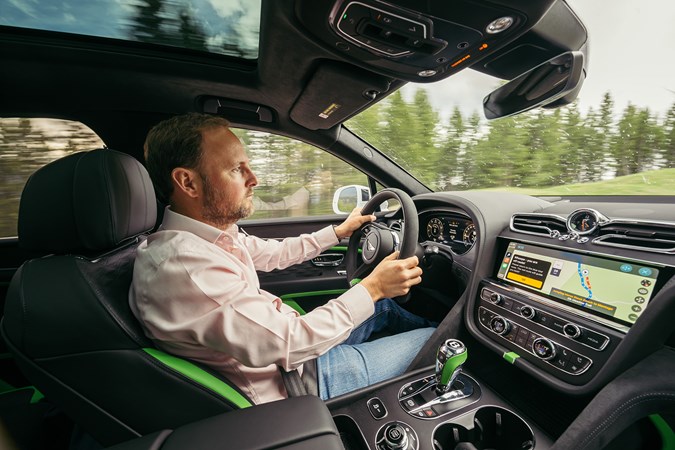
What’s it like to drive?
- Capable handling at all speeds
- Can off-road if you really want it to
- Easy to manoeuvre at parking speeds
It’s a big car, but not as unwieldy as you might expect. A major contributing factor to this relative agility is the optional active anti-roll system, which uses a 48-volt electrical supply to adjust the force it takes for the car to tip over when cornering. Its application in combination with the standard air suspension is very well judged indeed, with sportier driving benefiting from its own mode to stiffen the chassis, making quick cornering easily achievable.
We’d point out that this clever tech is only available on V8 models, though. Sure, the Hybrid gets air-suspension that can be stiffened and slackened as standard, but the extra weight of the big battery causes greater levels of body lean and it doesn’t feel as agile, either.
Both powertrains are available as S models (previously this was V8 only). This brings stiffer suspension for improved handling. It’s still an air-sprung setup so it’s comfortable on the straights but roll is even less pronounced and it’s surprisingly good fun in the bends for such a big machine.
The Speed version takes this to a new level. It features a tweaked Sport mode, which stiffens the dampers even further, and new 23-inch wheels. When coupled with the ceramic brakes, it’s possible to partially disengage the stability control into ESC Dynamic, which gives the car a bit more slip in corners. It helps it to feel more agile, a sensation that is helped by the brake vectoring and four-wheel steer.
Most Bentaygas are easy to handle at low speeds – the Speed’s 23-inch wheels make the car judder through sharp bumps. In fact, once again this is where the car’s at its best. We were surprised by the small turning circle – especially as this standard model does without the rear-wheel steering available available on Audi Q7 the Bentayga shares its platform with. This is standard on Bentayga EWB, however, which has an even tighter turning circle despite being 180mm longer between the axles.
The eight-speed automatic gearbox manufactured by ZF is perfectly matched to the engine’s performance when driven quickly or slowly; its changes are lightning-fast or almost undetectable.
There are steering wheel-mounted paddles to dictate changes yourself, but we found ourselves eschewing them in favour of letting the car do the work. This ‘box features a coasting function too, which decouples the engine from the gearbox in the top three gears when the driver lifts off the throttle to save fuel.


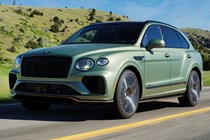

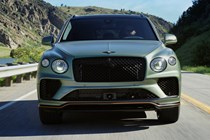
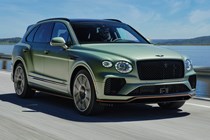
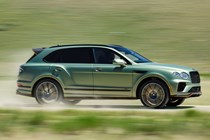
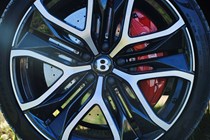
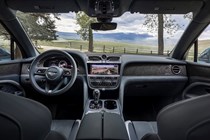
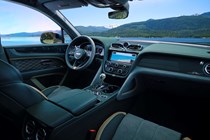
.jpg)
.jpg)
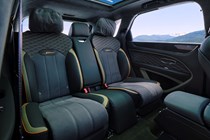

.jpg)
.jpg)
.jpg)
.jpg)
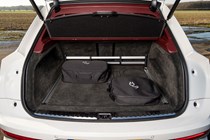
.jpg)
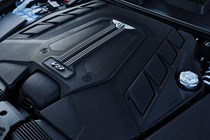








.jpg?quality=50)
.jpg?quality=50)


.jpg?quality=50)
.jpg?quality=50)
.jpg?quality=50)
.jpg?quality=50)

.jpg?quality=50)
